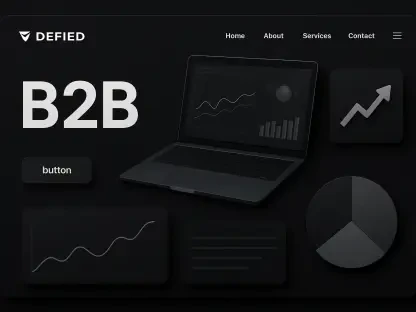Introduction to Email Marketing Solutions
In the fast-paced digital landscape of 2025, businesses face the daunting challenge of connecting with audiences amidst an overwhelming influx of online content, where email marketing emerges as a powerful lifeline with a staggering return on investment often cited as high as $42 for every dollar spent. This strategy remains a cornerstone for companies of all sizes, offering a direct channel to engage customers, nurture leads, and drive conversions. Both cheap email marketing services and premium tools play pivotal roles in this arena, catering to diverse needs and budgets while promising effective outreach.
Cheap email marketing platforms provide accessible entry points for startups and small businesses looking to establish a presence without hefty investments, often delivering essential features at minimal or no cost. On the other hand, premium tools target established enterprises with larger budgets, equipping them with sophisticated capabilities to handle complex campaigns. Understanding the distinctions between these options becomes crucial for selecting a solution aligned with specific marketing goals.
The spectrum of email marketing solutions addresses varying demands, from budget-conscious entrepreneurs testing the waters to multinational corporations seeking advanced automation and analytics. This comparison aims to dissect how each category serves its audience, shedding light on the trade-offs and benefits. By exploring these tools, businesses can navigate the crowded market to find a fit that balances cost with functionality.
Key Differences in Features and Performance
Pricing Structures and Affordability
When evaluating email marketing solutions, pricing stands as a primary differentiator between cheap services and premium tools, with the former often featuring free tiers or plans starting as low as $5 to $10 per month for basic functionalities. These affordable options make digital marketing accessible to small businesses and solo entrepreneurs who prioritize cost over extensive features. Many such platforms offer scalable plans that grow with user needs, ensuring flexibility without immediate financial strain.
Premium tools, by contrast, typically start at $50 per month and can escalate to hundreds or thousands for enterprise-level subscriptions, reflecting their comprehensive offerings and robust support systems. These costs are often justified for larger organizations with the resources to invest in high-end solutions that promise greater reach and efficiency. The disparity in pricing directly influences accessibility, where startups might lean toward budget-friendly options while established firms opt for the depth provided by higher-end plans.
This financial divide also shapes long-term strategy, as cheap services may suffice for initial campaigns but could require upgrades as a business expands, potentially leading to additional costs over time. Premium tools, though initially expensive, often include all-inclusive packages that prevent unexpected expenses. Businesses must weigh immediate budget constraints against future growth projections when deciding between these tiers.
Functionality and Features
Diving into the capabilities of email marketing tools, cheap services generally cover the essentials like basic automation, pre-designed templates, and intuitive interfaces that allow users to craft and send campaigns with ease. These platforms focus on simplicity, ensuring that even those with limited technical skills can launch effective emails. However, they might lack the depth needed for intricate marketing funnels or highly tailored content.
Premium tools elevate the game by incorporating advanced features such as AI-driven personalization, seamless integrations with CRM systems, and sophisticated segmentation options that target specific audience behaviors. These enhancements enable large-scale operations to fine-tune their outreach, often resulting in higher engagement rates. For instance, a multinational retailer might leverage premium software to automate personalized product recommendations based on past purchases, a feature rarely found in budget options.
The gap in functionality often dictates the scope of campaigns, where cheap tools suit straightforward newsletters or promotional blasts, while premium solutions cater to dynamic, data-heavy strategies. This distinction highlights the importance of aligning tool selection with campaign complexity. Businesses with minimal needs may find budget platforms sufficient, whereas those aiming for nuanced marketing must consider the broader capabilities of premium offerings.
Analytics and Performance Tracking
Analytics serve as the backbone of any successful email marketing strategy, yet the depth of insights varies significantly between cheap and premium tools. Budget-friendly services typically provide fundamental metrics such as open rates, click-through rates, and basic conversion data, offering a snapshot of campaign performance. These insights, while limited, often meet the needs of smaller entities focused on core outcomes rather than granular details.
Premium tools, however, deliver comprehensive reporting suites that include advanced metrics like behavioral tracking, A/B testing results, and predictive analytics to forecast future campaign success. Such detailed data empowers larger organizations to refine their approaches continuously, identifying trends that drive higher ROI. Industry trends suggest that businesses using in-depth analytics can improve conversion rates by up to 20% compared to those relying on basic reporting.
This disparity in analytical capabilities underscores a critical decision point for users, as the level of data required often correlates with the scale of operations. Small businesses might manage well with straightforward stats, while enterprises benefit from the actionable, in-depth insights premium platforms provide. The choice hinges on how much a company values data-driven decision-making in its marketing efforts.
Challenges and Limitations of Each Option
Constraints of Budget-Friendly Platforms
Cheap email marketing services, while cost-effective, come with notable drawbacks that can hinder growth or efficiency for some users. Limited customer support often means delayed resolutions to technical issues, which can be frustrating during time-sensitive campaigns. Additionally, these platforms may offer fewer integrations with other business tools, restricting seamless workflow for expanding operations.
Scalability poses another challenge, as many low-cost services cap subscriber lists or email sends, forcing businesses to upgrade or switch providers as they grow. Deliverability rates can also suffer due to shared servers, potentially impacting how many emails reach inboxes. These constraints suggest that while budget options are ideal for initial steps, they may not sustain long-term demands without adjustments.
The learning curve for cheap tools is generally minimal, but the lack of advanced features might limit strategic depth over time. Businesses must anticipate these potential roadblocks, especially if rapid growth is on the horizon. Evaluating the trade-off between immediate savings and future needs becomes essential to avoid disruptions down the line.
Drawbacks of High-End Solutions
Premium email marketing tools, despite their robust offerings, present challenges that may deter certain users from adopting them. The high cost can be prohibitive for small businesses or startups, especially when the full range of features exceeds current requirements, leading to an unnecessary financial burden. This overkill scenario often means paying for capabilities that remain unused in the early stages.
Complexity is another hurdle, as the sophisticated interfaces and extensive options of premium platforms can overwhelm beginners or teams without dedicated marketing expertise. The steep learning curve might require additional training or hiring specialized staff, further increasing expenses. For smaller entities, this level of intricacy can feel more like a barrier than a benefit.
Deliverability and technical demands also warrant consideration, as premium tools often require consistent maintenance to optimize performance, which can strain resources. While these platforms excel for large-scale needs, they may not align with simpler goals. Companies must assess whether the investment matches their capacity to utilize such advanced systems effectively.
Conclusion: Which Option Suits Your Needs?
Reflecting on the detailed comparison, it becomes clear that cheap email marketing services and premium tools each carve out distinct niches based on pricing, features, and inherent challenges. Budget platforms stand out for their affordability and simplicity, while premium solutions impress with their depth and analytical prowess, catering to vastly different user bases. The analysis highlights how these differences shape strategic choices across business scales.
For actionable next steps, businesses are advised to prioritize a thorough assessment of their budget alongside immediate and long-term marketing objectives to pinpoint the right fit. Small enterprises or startups find value in starting with cost-effective tools to build a foundation, with an eye toward scaling up as needs evolve. Conversely, larger organizations with complex demands are guided toward premium options to harness advanced capabilities that drive competitive edges.
Looking ahead, the decision-making process benefits from ongoing evaluation of emerging trends in email marketing technology, ensuring adaptability in a dynamic digital space. Companies are encouraged to test platforms through trial periods or free tiers where available, gathering firsthand experience to inform final commitments. This strategic approach paves the way for sustained growth, aligning tools with evolving goals in a landscape that demands flexibility and foresight.









